On this path in San Francisco, you can walk from the ocean to the sky in just 163 steps.
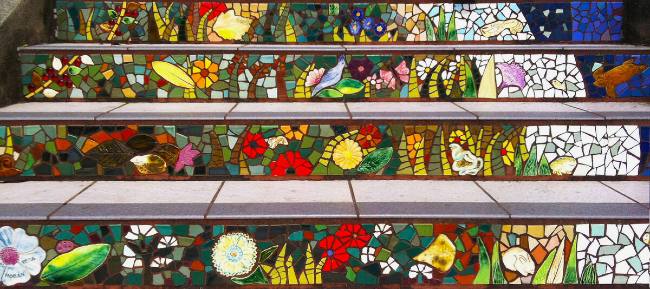
Not just a beautiful set of mosaics, the 16th Avenue Tiled Steps connecting 15th Avenue with 16th Avenue near Moraga Avenue in San Franciso is a work of art, a neighborhood project, a gathering place, and an ecological haven for an endangered species, all in one. From Google Maps, the satellite view shows a long string of gray, concrete steps, but if you go there, you will see something quite different.
Since Marcus Viruvis Pollio presented his three fundamental elements of good architecture— Utilitas (utility), Firmitas (strength) and Venustas (form or beauty)—in 1 AD, form vs. function has been a debate in the world of architecture. When something useful is also beautiful and well-built, the three come together.
The 163 steps of 16th Avenue Tiled Steps in San Franciso weave together several wonderful elements into one piece. First, they are lovely. The riotous beauty of the four steps pictured above reminds me of a flowering meadow, in which our Creator throws extravagant colors and textures together in a display that might be thought flashy in a different setting, but not in a mountain meadow.
Second, they are useful. The concrete steps were originally built to transport people from streetcar stops at the bottom of the street to their houses at the top of the hill. When the streetcars died out, the steps fell into disuse and became a target for graffiti. Residents, tired of the graffiti and the work of cleaning it up, dreamed of making the steps something the neighborhood could rally around and be proud of. The community raised funds, lobbied the government, and after two and a half years, transformed an unattractive concrete structure into a work of beauty and usefulness.
The joint nature of the project is demonstrated in the 300 sponsor names included within the completed stairway mosaic, a mosaic which consists of over 2000 tiles and 75,000 tile, mirror, and stained glass fragments. To enable people to be hands-on producers of the tile in addition to financial sponsors, the community held mosaic workshops. The stairway begins with images of the sea at the bottom of the stairway, climbing toward images of the sky at the top.
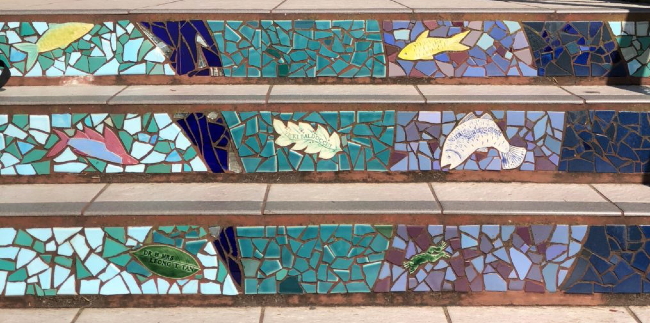
The art and creativity don't end with the mosaic. Sponsoring individuals and groups have also planted gardens around the stairway. Most of the plantings are natives and succulents, with some areas specifically designed as habitat for the endangered green hairstreak butterfly, thus integrating nature into the design.
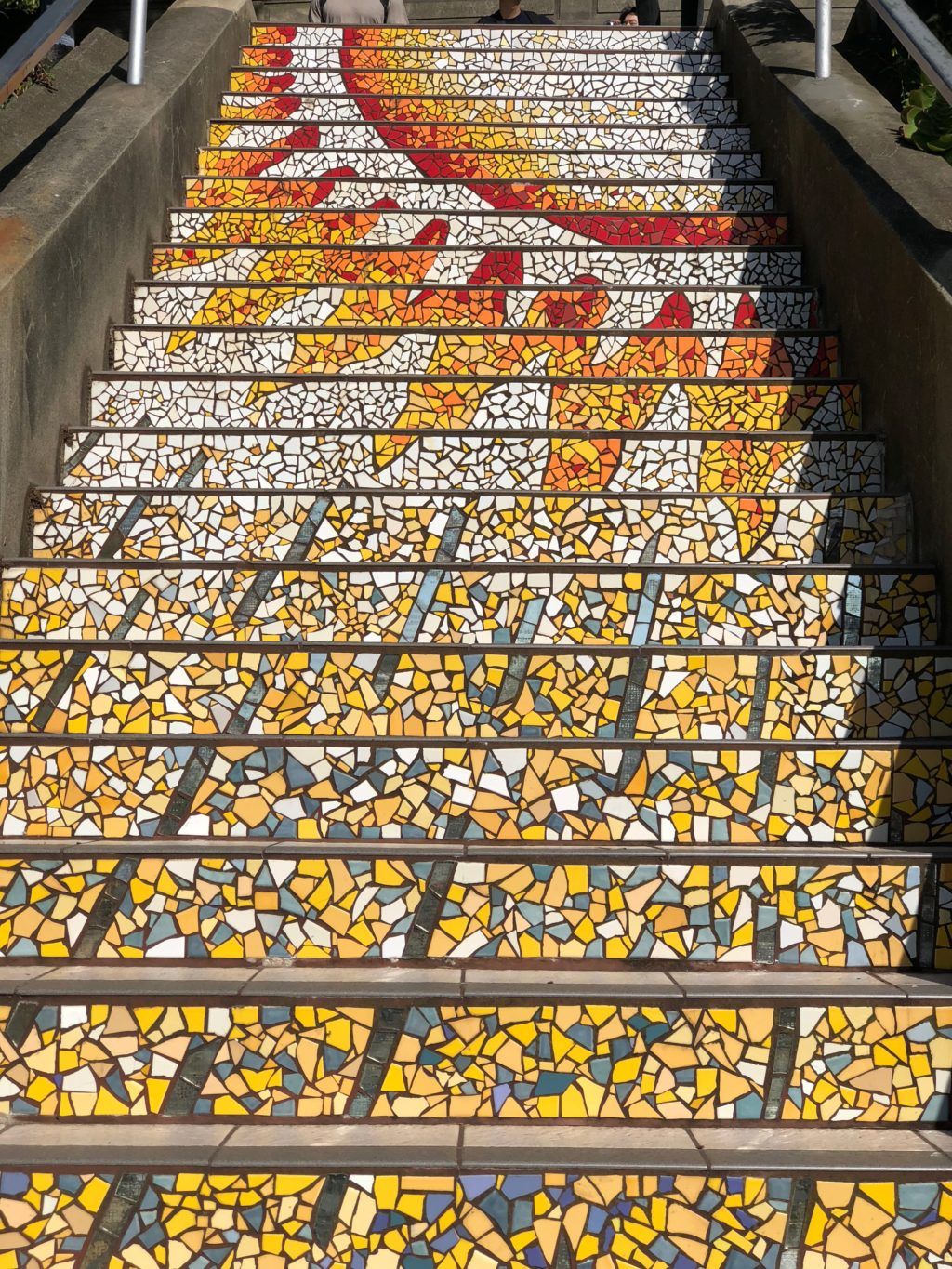
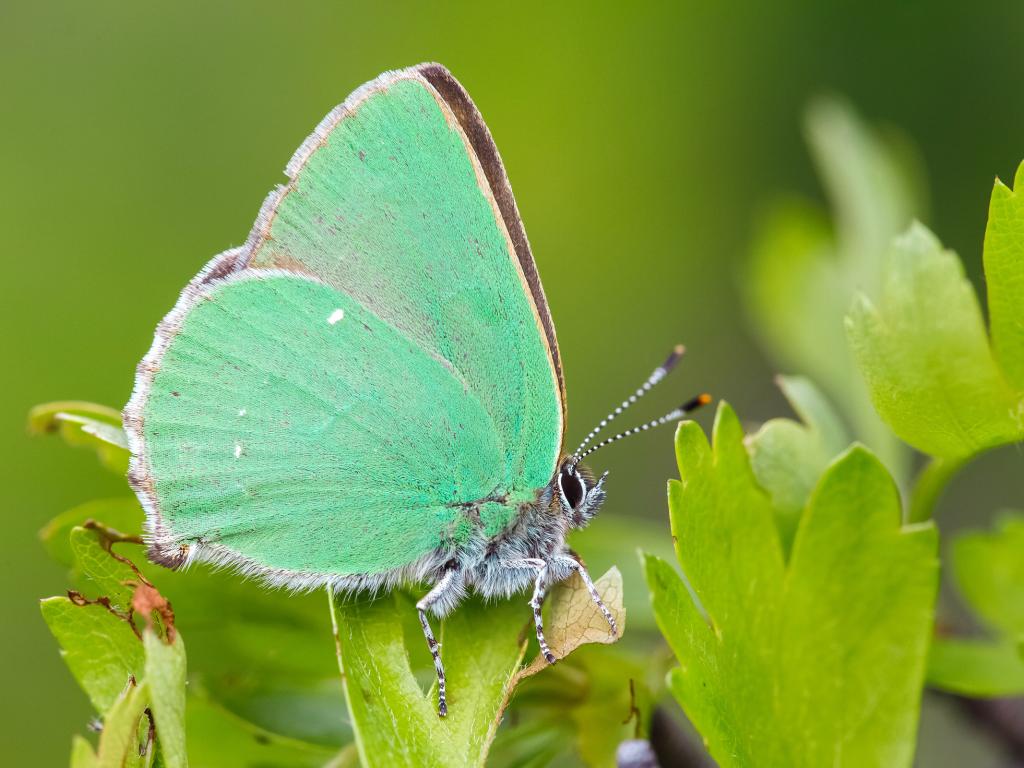
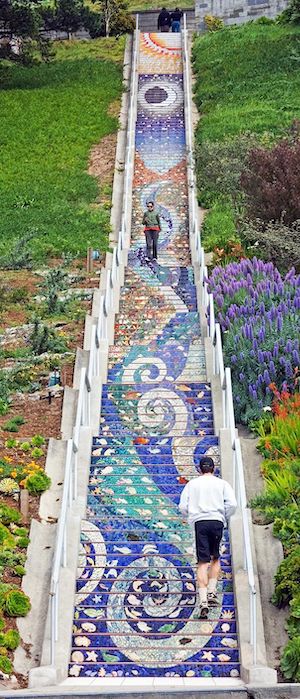
The project continues to be supported by community volunteers, who maintain the tiled steps and tend the gardens. It is a vital and living sign of what a community can do with vision, hard work, connection, and joy.
In your own yard or living space, are there ways to make something that is currently functional even better by building in new dimensions of beauty and sustainability?
Do you have dreams for a family or community project that could build connections within the wide community of creation?
Louise

We would love to hear from you in the comments below.
Two other ways to respond:
- SUBSCRIBE via the green button to get posts directly to your email twice a week (it's free).
- SHARE the post through the "Share this" buttons above.
You can contact me directly at info@circlewood.online.